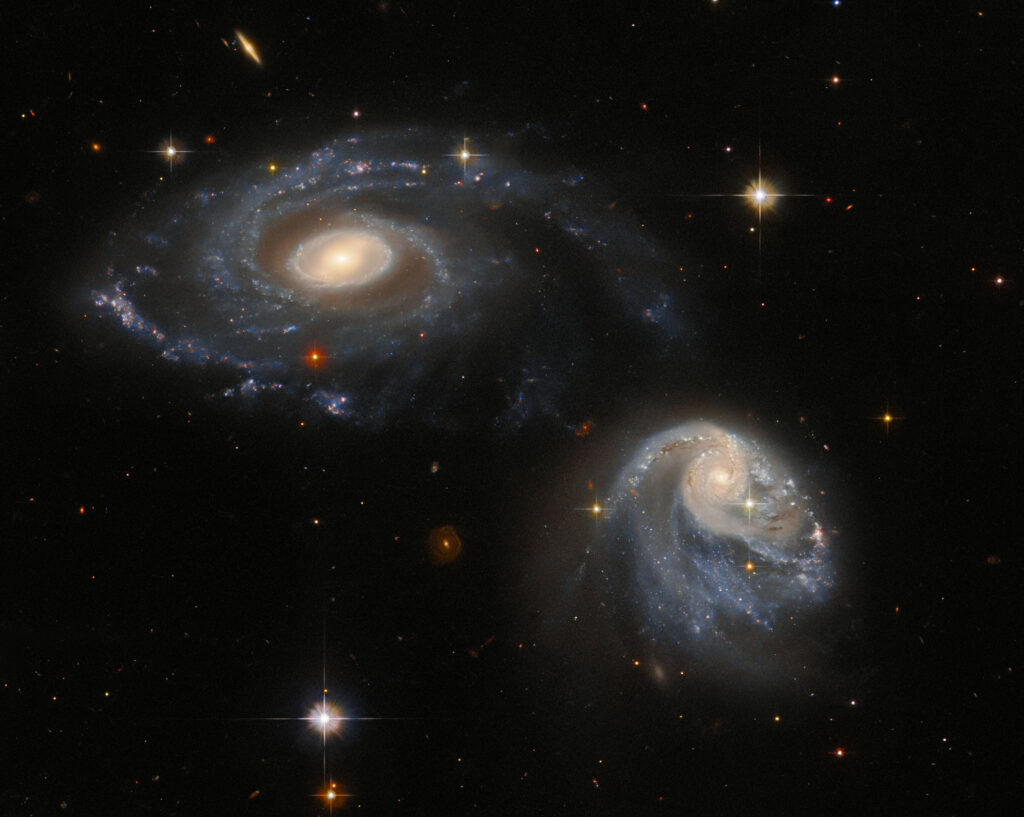The Hubble mission support group has published a new image of deep space. It captures a pair of interacting galaxies, known under the designation Arp-Madore 608-333.

At first glance, both Arp-Madore 608-333 galaxies make a serene impression. But if you look closely, you can see that their spiral structures have already undergone certain distortions due to mutual gravitational interaction. It will only increase, which over time will lead to the fact that the galaxies will be completely destroyed, and then merge into a single whole.
The interacting Arp-Madore 608-333 galaxies were captured as part of a project aimed at making fuller use of Hubble’s capabilities. It’s no secret that the telescope is in great demand among scientists. The distribution of its observational time is handled by the Space Research Institute using the Space Telescope (STScI). Every year, it receives thousands of applications for the use of Hubble from astronomers from various countries. Their volume far exceeds the theoretically possible observation time of the telescope, so at best, only one out of five or six applications receives approval.
At the same time, Hubble always has a small but constant fraction of time (about 2-3%), which remains unused. We are talking about the periods when the telescope is deployed to target new objects. In order to fill this gap, STScI has developed snapshot programs. Their goal is to shoot interesting targets that appear in the Hubble’s field of view at the moment of the turn. For this purpose, the researchers looked through existing astronomical catalogs to compile a list of potentially interesting targets. It also includes the Arp-Madore 608-333 galaxies.
Earlier we talked about how Hubble photographed an intermediate spiral galaxy.
According to https://esahubble.org
Follow us on Twitter to get the most interesting space news in time
https://twitter.com/ust_magazine
